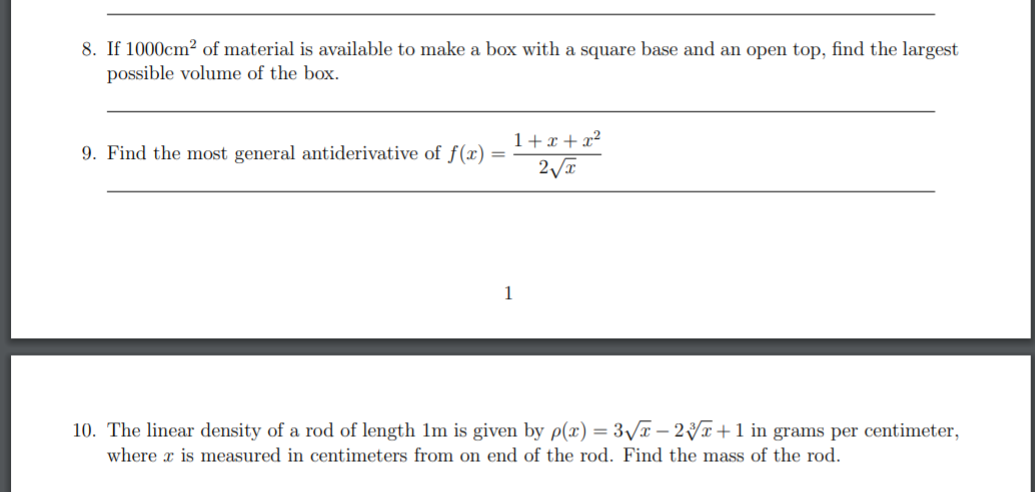10. The linear density of a rod of length 1m is given by p(x) = 3/T – 2+1 in grams per centimeter, where x is measured in centimeters from on end of the rod. Find the mass of the rod.
10. The linear density of a rod of length 1m is given by p(x) = 3/T – 2+1 in grams per centimeter, where x is measured in centimeters from on end of the rod. Find the mass of the rod.
Functions and Change: A Modeling Approach to College Algebra (MindTap Course List)
6th Edition
ISBN:9781337111348
Author:Bruce Crauder, Benny Evans, Alan Noell
Publisher:Bruce Crauder, Benny Evans, Alan Noell
ChapterA: Appendix
SectionA.2: Geometric Constructions
Problem 10P: A soda can has a volume of 25 cubic inches. Let x denote its radius and h its height, both in...
Related questions
Question
How do I do number 10

Transcribed Image Text:8. If 1000cm? of material is available to make a box with a square base and an open top, find the largest
possible volume of the box.
1+x + x²
9. Find the most general antiderivative of f(x) =
1
10. The linear density of a rod of length 1m is given by p(x) = 3/x – 2 VT+1 in grams per centimeter,
where x is measured in centimeters from on end of the rod. Find the mass of the rod.
Expert Solution
This question has been solved!
Explore an expertly crafted, step-by-step solution for a thorough understanding of key concepts.
Step by step
Solved in 2 steps

Recommended textbooks for you

Functions and Change: A Modeling Approach to Coll…
Algebra
ISBN:
9781337111348
Author:
Bruce Crauder, Benny Evans, Alan Noell
Publisher:
Cengage Learning

Functions and Change: A Modeling Approach to Coll…
Algebra
ISBN:
9781337111348
Author:
Bruce Crauder, Benny Evans, Alan Noell
Publisher:
Cengage Learning